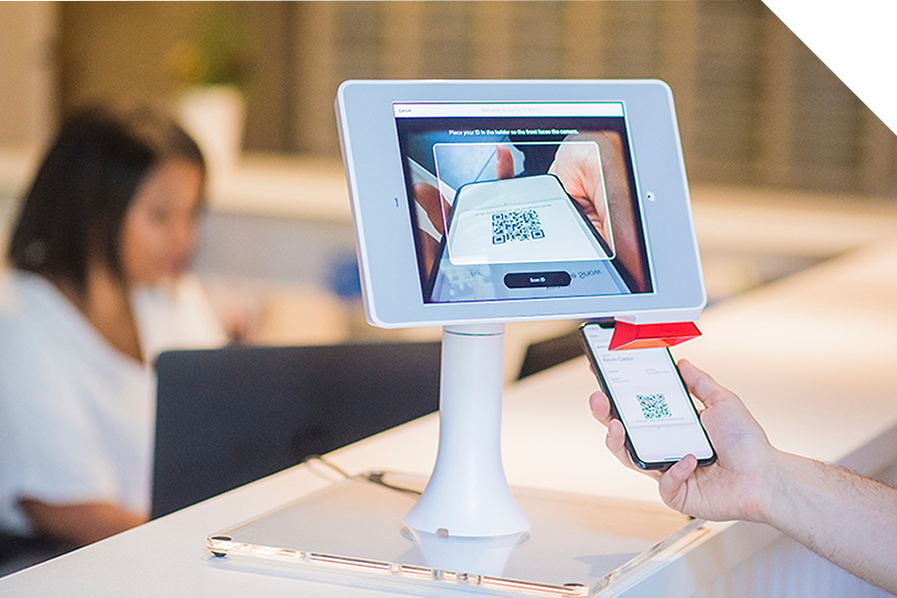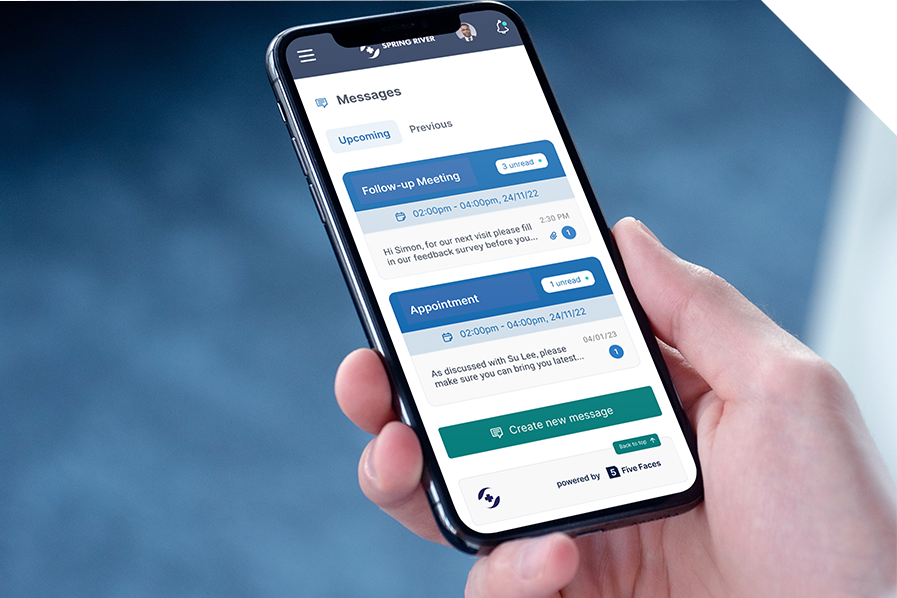Digital Queue Management Solutions
Improve your wait experience and consumer engagement with digital queue management. Remove typical friction points to take the frustration out of waiting, giving consumers choice and transparency.
Reshape your wait experience
- Optimise queue management to reduce physical queues
- Let visitors wait comfortably, from anywhere
- Provide notifications for bookings and wait time updates
- Smart forms for data collection
- Automate workflows for pre-made appointments and walk-in traffic
- Collect and monitor data

Create efficient experiences
Improve consumer experience
Ensure timely appointments, clear communication, choice of where to wait, and access to real-time information

Reduce
wait times
Enhance queue management and visitor flow to alleviate bottlenecks, and improve the wait experience
Minimise floor space required
Reduce the size of waiting rooms and floor space required to boost operational efficiency and cut costs
Reduce
no-shows
Automate communications to minimise missed, late and rescheduled appointments
Automate queue management
- Provide self-service check-in options to reduce physical queues
- Allow consumers to wait comfortably from anywhere using mobile reminders
- Alleviate administration, improve the consumer experience and ease waiting room congestion
- Use calling displays for those who choose to wait onsite


Offer choice in communication
Offer multiple channels for communicating with consumers:
- Text reminders for timely information on appointment preparation and follow up
- Guidance on appointment location and wait-time updates
- Streamlined check-in with modern kiosks that use QR codes or via the consumer’s mobile phone
Easily adapt to change
- Support evolving requirements with system administrator access to create and configure workflows and define business rules
- Innovate quickly without external tech support


Automate data collection and integration
- Digitise paper forms into Smart Forms, reducing administrative burden and postage costs
- Use a simple drag-and-drop interface to draft, publish and distribute Smart Forms without technical resources
- Populate source systems automatically with form data
Add digital touchpoints to your consumer journey
- This is a buildable solution that can grow as you digitise your consumer journey
- Add touchpoints such as Visitor Management, Wayfinding, Digital Signage, Smart Forms, Smart Cards and more
- All on the same, scalable technology platform

The University of Queensland Cuts Student Wait Times by 30%
Digital queue management for Student Central has enhanced the student experience – even allowing students to join the queue while they’re travelling to campus.
Frequently asked questions
A queue management system, often referred to as a QMS, is a software solution designed to streamline customer flow and improve the wait experience. Instead of the traditional method of taking a paper ticket and waiting in a designated area, customers can now check in via kiosk or mobile (including remotely via mobile), and wait comfortably in a location of their choice. They can rest assured that they will receive timely mobile updates when it’s their turn in the queue.
A comprehensive queue management system goes beyond just managing the queue. It can include features like streamlined check-in processes, screening questions and prioritisation or routing of the visitor, calling displays for the waiting room, smart forms for efficient data collection, and automated workflows to handle both pre-scheduled appointments and walk-in traffic.
By using a queue management system, businesses can create a more streamlined and satisfying customer journey, reducing wait times and enhancing overall service quality.
Queue management solutions are powerful tools for gathering and analysing a wealth of valuable data, which can include:
- Wait Times: Accurate measurement of customer wait times, allowing organisations to identify bottlenecks in their processes and optimise resource allocation.
- Service Efficiency: Data on service durations and transaction times, enabling performance assessment and process improvements.
- Customer Behaviour: Queue management solutions offer valuable insights into customer behaviour, such as preferences, peak hours, and how customers utilise services. This information is instrumental in strategic planning and facilitates personalised customer interactions.
- Staff Productivity: The system’s ability to monitor staff performance and response times aids in optimising workforce management. Organisations can ensure that staff resources are used effectively to meet customer demands.
- Real-time Monitoring: These solutions provide real-time data on queue status and service availability. This live information enables businesses to make dynamic adjustments to their operations, ensuring a smoother and more responsive customer experience.
By collecting and analysing this data, organisations can enhance their operational efficiency, improve customer service, and make data-driven decisions to drive their business forward.
Queue management solutions enhance the customer experience by addressing several critical aspects:
- Minimising Wait Times: One of the primary ways queue management solutions improve the customer experience is by significantly reducing wait times. Customers no longer need to endure long, frustrating waits. Instead, they can check in instantly (remotely if required) and receive timely updates, ensuring a smoother and less stressful waiting experience.
- Reducing Frustration: Eliminating the need for customers to physically wait in queues reduces frustration levels. This reduction in frustration contributes to a more positive customer experience.
- Enhancing Satisfaction: Personalised service is made possible through customer data analysis. Queue management solutions enable tailored services and interactions, making customers feel valued and appreciated. The result is higher customer satisfaction and loyalty.
- Real-time Updates: Customers receive real-time updates on queue status and estimated wait times. This transparency and proactive communication keep customers informed and reduce uncertainty, further improving their experience.
A queue management system operates through a series of key steps to optimise the customer experience and streamline operations
- Customer Arrival: Customers can either join the queue via a kiosk or their mobile (some clients with complex queues also prefer to greet customers in person equipped with a tablet). This flexibility allows for convenient and contactless check-ins.
- Queue Assignment: The system assigns customers to specific service points based on various factors, including the type of service required, prioritisation/triaging and staff availability. This ensures efficient resource allocation.
- Real-time Monitoring: Both administrative staff and customers have access to real-time monitoring of queue status and estimated wait times. This transparency empowers customers with information and helps staff manage the queue more effectively.
- Notifications: Customers receive timely updates regarding their queue position and turn via digital displays or SMS notifications. They are not confined to a waiting room but have the freedom to wait in a location of their choice, such as a nearby coffee shop, with the confidence that they’ll be alerted when it’s their turn.
- Service Interaction: When it’s their turn, customers are efficiently served at the designated service point. The system records service durations, which can be valuable for performance evaluation and process optimisation.
- Analytics: The system collects and analyses a wealth of data, including wait times, service durations, and customer behaviour. This data-driven approach allows organisations to make informed decisions for continuous process improvement, resulting in a more efficient and customer-centric operation.
Queue management solutions play a pivotal role in streamlining operations and enhancing operational efficiency through a range of strategies:
- Optimised Staff Allocation: These solutions ensure the right staff are assigned to service points, taking into account factors like service type and staff availability. This allocation minimises inefficiency and overburdening of resources.
- Reduced Idle Time: By automating queuing and appointment scheduling, idle time can be reduced to allow staff to focus on servicing customers efficiently.
- Data-Driven Insights: Queue management solutions provide valuable data-driven insights. Predictive analytics enable organisations to forecast peak hours, allocate resources effectively, and improve overall resource management. This proactive approach prevents bottlenecks and ensures resources are allocated where they are needed most.
- Staff Performance Monitoring: The system can monitor staff response times and service efficiency. This encourages better performance and accountability among staff, ultimately contributing to improved service quality.
Reduced Physical Footprint: Digital queue management also alleviates pressure on waiting rooms. Customers have the flexibility to wait in a location of their choice, reducing the physical footprint and associated costs required by the service provider. This can be particularly valuable for businesses looking to optimise their physical spaces.
More Solutions
Transform the consumer experience with our modular solutions



